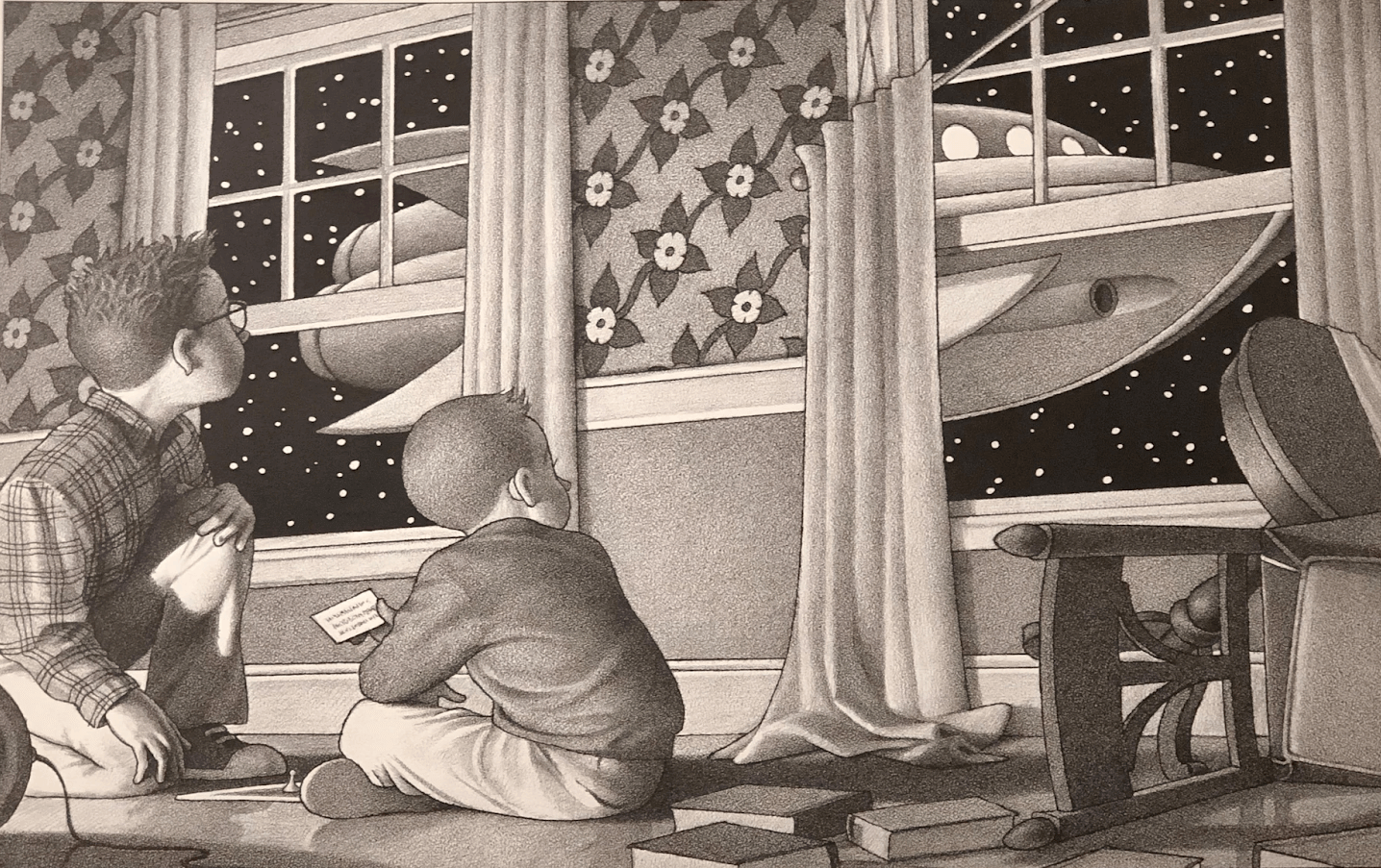Zathura
Mehri Sadri. 7/30/2020

Everybody has different preferences when it comes to book genres. Some individuals prefer death-defying characters pursuing journeys in fictional atmospheres, while others enjoy historical nonfiction realities that were experienced in the past. Although these preferences exist, certain topics will always reach a consensus of interest among a wide audience. One of these topics is space exploration: a growing journey into the unknown facilitated by jaw-dropping technology and eager individuals. A great way to learn more about the astronomical advancements is to consult a piece of text usually presented in a nonfiction form. However, fictional content can be just as, if not more, alluring to a great audience, since the author can twist reality’s depth to render real life into something greater.
Chris Van Allsburg understands this scientific appeal towards space and its entities and embodies young curiosity for these things through his book Zathura. Allsburg is no new face in the name of writing: he has won two Caldecott Medals for his illustrations in Jumanji as well as The Polar Express, making him a household name in the world of book art. Although he is most notable for his artistic abilities in fiction, he is also responsible for writing children’s books, with Zathura being a good example of how his creative writing and ingenious illustrations combine for a fantastic literature experience.
Zathura takes on a fictional standpoint through photos to depict an adventure two boys encounter through space. The journey begins when the two boys are hurled through space after playing a cryptic game. The game is called Zathura, and they find it under the Jumanji board they previously intended to use. This book is meant to be a sequel to Jumanji, which is why it directly references the piece of text. The Zathura game claims that they will be experiencing a meteor shower, and right after one of the two boys reads this claim, the action begins, and they are officially in outer space. The two boys must focus on maintaining their balance and direction in space, as they were not used to the lack of gravity. As their house enters the space realm, the area is exposed to any space figures Allberg put his mind to. Zorgon ships and black holes are just a couple of obstacles the two boys face, and their fictional adventure through space proves to be an experience of a lifetime.
Although black holes are real, the aliens that the two boys encounter in the novel have not been proven to be real by modern science. However, the visual appeal as well as the storyline both contribute to creating something just as fascinating as factual studies. Allsburg, in an interview with NASA, claimed that he was inspired by NASA’s numerous space photos that they have published over the years, and how he wanted to use these photos as focal points for a make-believe adventure. When asked about his inspiration to turn NASA’s discoveries into wild tales unexpected to occur in real life, he claimed how his “ideas work on people’s imaginations outside of normal experiences. If somebody describes something to you that could happen or might happen, and if it is of any interest to you at all, then you instantly start to use your imagination to think about it.”
Although it has often been looked down upon to use creativity as an outlet over factual content, Allsburg sees this same factual information as a segway towards all of the crazy ideas that cross his mind. He says that scientists, whether they be astronomers or physicists like the ones at NASA, should be able to use their imagination to think of abstract concepts that may be occurring in the outer world. After all, an idea seen as ridiculous may not have any evidence contradicting it: so think big. NASA has done a sufficient job of keeping creative minds among their employees, as they explained to Allsburg during their interview that “in order for us to be successful at our jobs here at NASA, we have to keep a child-like sense of wonder.”
Though space’s fundamentals have proven extremely effective in continuing research and realistic prospects towards the universe, there is never a need to be too serious. The crazy abstractions and wild wonderlands made in one’s mind can produce stories far more interesting than the facts in most cases, and Allsburg proves this point perfectly through Zathura’s legacy.
Mehri is a senior at Scripps Ranch High School in San Diego, California. Although she has always been more inclined in humanities subjects, Mehri has found a love for combining science and art and their practicalities, and hopes to spread this same love to others with her articles.
